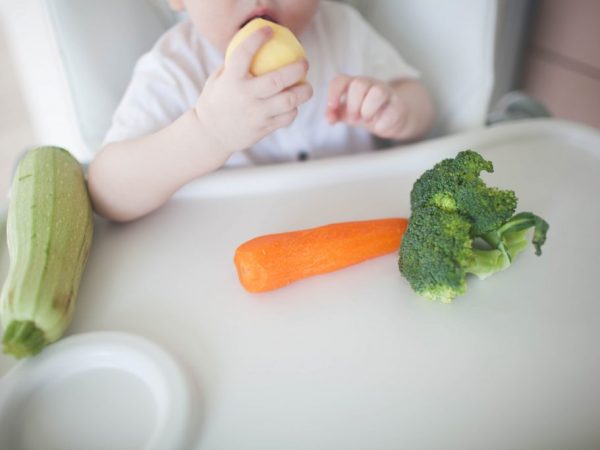Allergy to carrots in children and adults
Allergic reactions of the body occur to many foods. These include peanuts, soybeans, eggs, dairy products and some vegetables and fruits, among which orange roots are distinguished. They contain potentially dangerous allergens, due to which an allergy to carrots can appear in a child and an adult.

Allergy to carrots in children and adults
Causes
It is a misconception that such a reaction of the body refers to eating disorders. Often, its manifestation is caused by a number of reasons:
- additives, preservatives and colorants in store products;
- individual intolerance to a vegetable;
- heredity;
- cross reaction.
Often, adult allergy to orange carrots is cross-linked. It appears as a result of intolerance to pollen from other plants. This is due to a protein content similar to that found in pollen plants. With weakened immunity, the human body ceases to distinguish between allergens and reacts to similar ones.
One of the causes of intolerance is diabetes mellitus. Sugar in the composition of the root crop causes a deterioration in the general condition and provokes the appearance of an allergic rash.
Symptoms
A negative reaction most often occurs when eating a vegetable raw, but there are isolated cases caused by a boiled root vegetable. The main symptoms of carrot allergy include:
- nasal congestion;
- conjunctivitis;
- runny nose;
- cough or shortness of breath;
- sneezing;
- swelling of the mucous membranes;
- itching of the skin;
- rashes on the face and body;
- burning sensation in the mouth;
- abdominal pain;
- vomiting.
Symptoms are noticeable immediately after eating the vegetable or directly upon contact with it.
Carrot allergies are a serious medical condition that can lead to anaphylactic shock.
Manifestation in a child

Carrots are introduced into the diet gradually.
For the first feeding, babies often choose carrots. When you get acquainted with a root vegetable, the reaction most likely will not appear, because the body is just beginning to create antibodies. After the next steps, the body will show the presence of symptoms, such as increased gas production or a red rash on the face. The main reason is the lack of essential enzymes in the infant's digestive system.
A single injection of a large amount of root crops in 80% causes allergies.
Drinking juice, like vegetable puree, can be fraught with consequences. Allergy to carrots in a child is almost the same as in adults:
- swollen gums and lips;
- hives on the face;
- conjunctivitis;
- runny nose;
- flatulence;
- diarrhea;
- impaired appetite.
The kid shows anxiety: is capricious and crying. In infants, carotene jaundice appears, manifested by pigmentation of the skin. Long-term breastfeeding and careful introduction of complementary foods are capable of protecting the child from the disease.
It is recommended to introduce boiled carrots into the diet of an infant no earlier than reaching the age of 7 months, in raw form - 10 months.
When observing symptoms, it is important to see a doctor immediately.
Danger of carrots when breastfeeding
When breastfeeding, a mother should be careful with orange and red foods, since they can not only cause a rash, but also worsen the overall well-being of the baby. There are several rules for eating root crops with HB (breastfeeding):
- For 1 month after giving birth, you should refrain from root crops.
- Until the child reaches 3 months of age, it is undesirable to eat the vegetable raw.
- Dishes with baked, stewed and boiled vegetables are allowed throughout the entire lactation period.
When carrots are introduced into the diet for the period of HB, the baby's behavior is monitored for 3 days.
Treatment and prevention
The first thing to do when allergic symptoms appear is to wash, rinse your mouth and drink 1 liter of liquid. After getting rid of the allergen, symptoms disappear in about 1.5 hours.
Drugs
When the diagnosis is confirmed by a doctor, treatment begins with sorbents. Among them, "Enterosgel", "Fosfalugel", "Polikopb" are distinguished by their effectiveness.
When relieving symptoms, corticosteroid and antihistamine drugs are used. For the treatment of the rash, the means "Zirtek", "Claretin", "Suprastin" are used. When conjunctivitis appears - drops "Cromhexal".
Doctors also develop a hypoallergenic diet and choose the optimal treatment strategy.
Folk recipes
Folk remedies help alleviate the symptoms. The following recipes are highly effective:
- To make a herbal mixture, take 35 g of strawberries, 20 g of wormwood, 15 g each of nettle, burdock and dandelion root. To prepare the infusion, take 1 tbsp. l. mixture and pour a glass of dill. Insist for at least 12 hours. The finished drink is divided into 3 parts and consumed during the day.
- For the treatment of redness and rashes 1 tbsp. l. dried nettle is poured with 250 ml of hot boiled water and insisted for 30 minutes. The remedy is taken before meals during the day.
- Chew honeycombs with bee honey in the morning for 10 minutes. daily.
Prevention measures
When cross-allergy to carrots is associated with a reaction to pollen plants, the raw root vegetable is excluded from food for prevention. In other cases, the vegetable is completely abandoned.
Symptoms in a child disappear on their own as the body matures. Adults should be more careful, because they should not only exclude the product from the diet, but also avoid tactile contact with it.
Steam from cooking dishes with an orange root vegetable, getting into the eyes and respiratory organs, causes swelling of the mucous membranes. Carrot juice should not be used by people with allergies.
Conclusion
Carrots are an allergen, so you should be careful when eating them. In the diet of children, it must be strictly controlled by parents.


